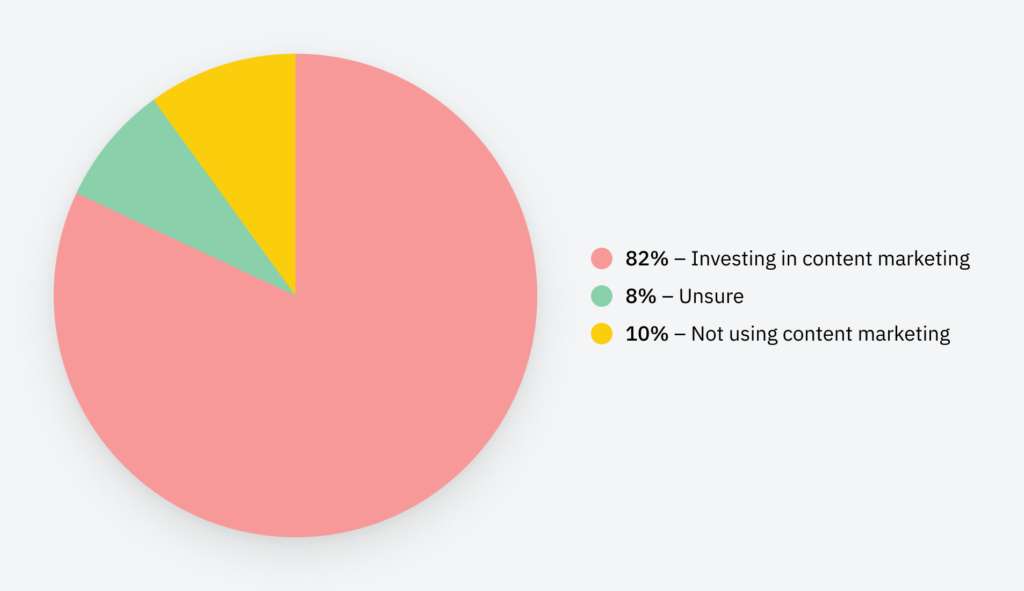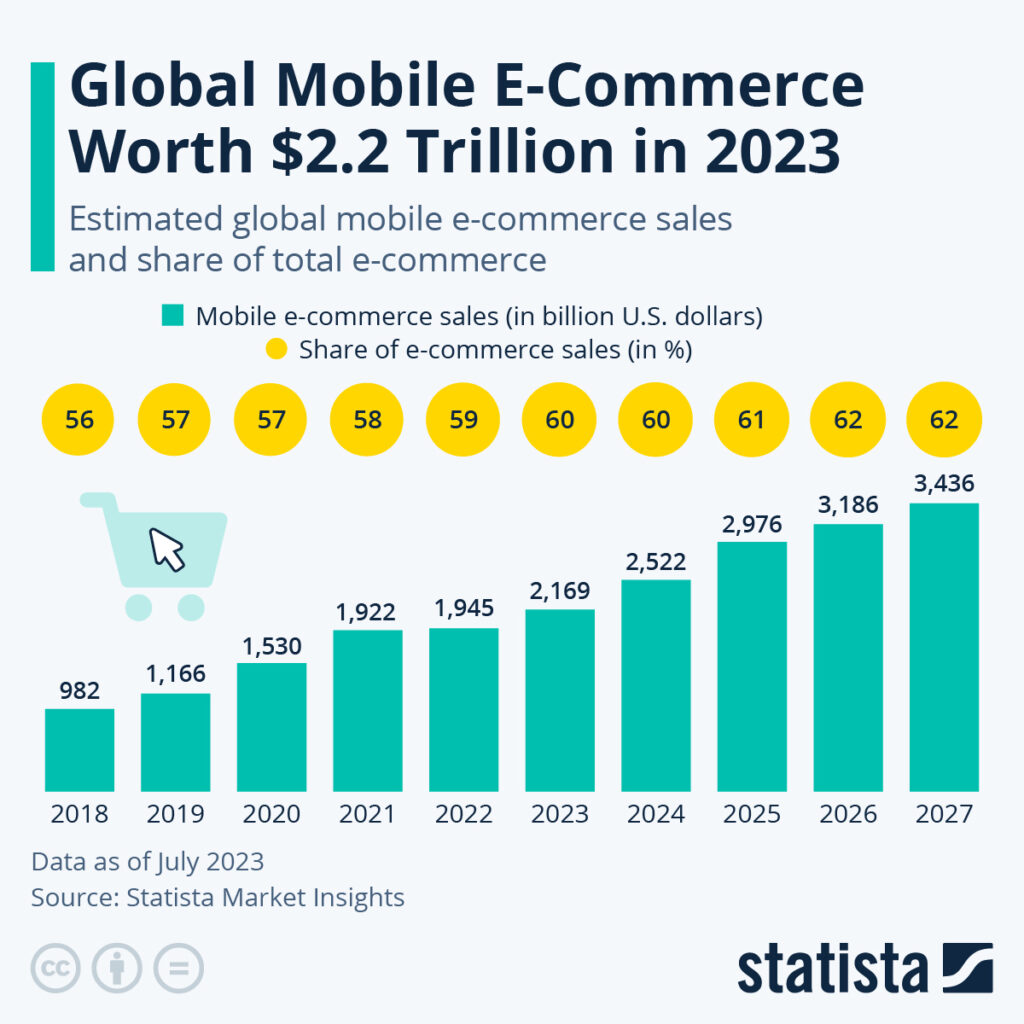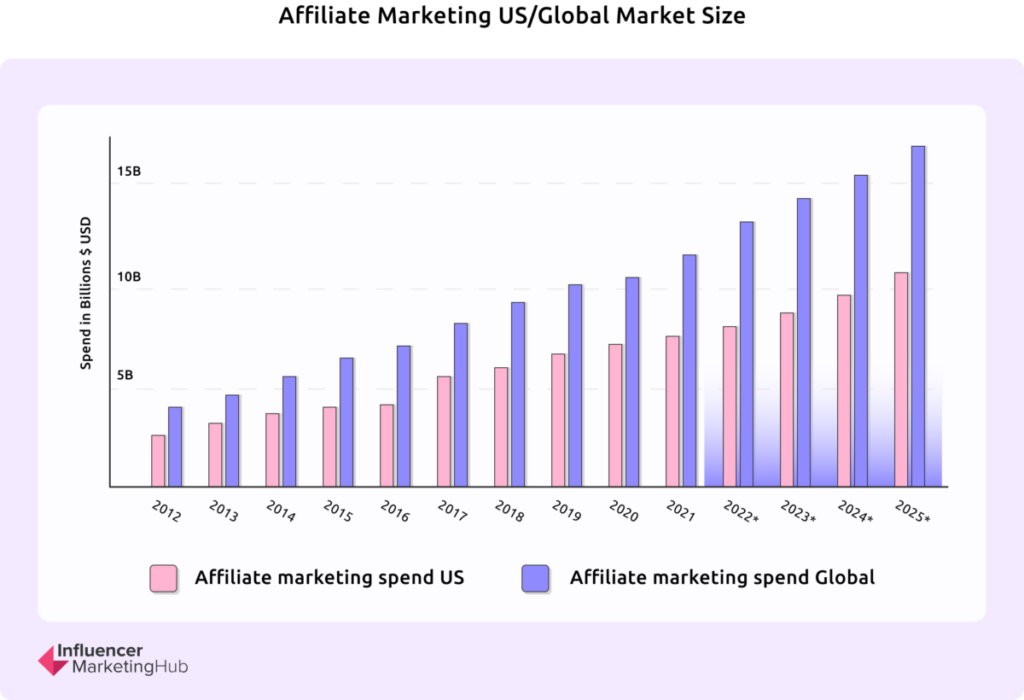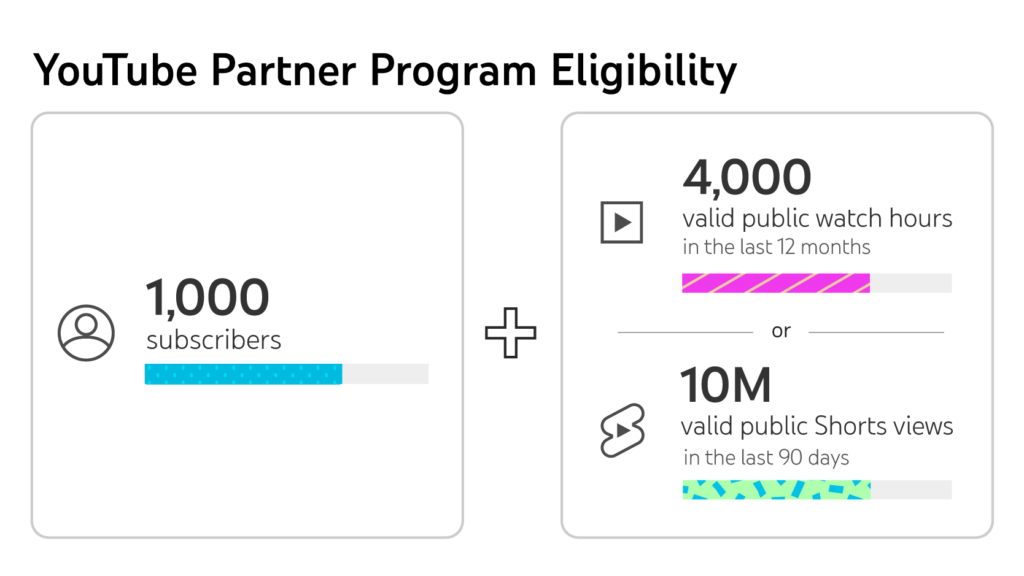Looking to start a business in 2024? You’re not alone. More people than ever are diving into entrepreneurship, especially online. The best part? You don’t need a ton of capital or a physical storefront to get started. With the right business model, you can launch and scale a successful venture right from your laptop.
But here’s the catch: not all business ideas are created equal. Some are outdated, saturated, or just plain difficult to break into. That’s why choosing the right business model is crucial. You want something that’s not only profitable but also aligns with your skills and interests.
In this post, I’m breaking down the best business ideas for 2024—from AI and automation agencies to online education. These are the models that are not only trending but also practical for anyone looking to make serious money.
Ready to find your next big idea? Let’s dive in and explore the best business models you can start today.
1. AI and Automation Agency
AI and automation are not just buzzwords—they’re transforming how businesses operate. Companies are desperate to automate repetitive tasks, streamline operations, and leverage data-driven insights. This is where an AI and automation agency comes in. If you can help businesses integrate AI solutions and automate their processes, you’re sitting on a goldmine.
Why It’s a Great Idea
AI isn’t going anywhere. In fact, the AI industry is expected to grow to $190 billion by 2025, according to Statista. Businesses across all sectors—from healthcare to finance—are investing heavily in AI and automation. They need experts who can guide them through the transition, and that’s where you step in. It’s practically future-proof.

How to Get Started
- Build Your Skill Set: You don’t need a PhD in AI, but you do need to know your stuff. Start with online courses on platforms like Coursera or Udacity. Focus on learning the fundamentals of AI, machine learning, and automation tools like UiPath or Zapier.
- Choose Your Niche: Specializing in a specific industry or type of automation can set you apart. Whether it’s automating customer service with chatbots or optimizing supply chain processes, find a niche where you can become the go-to expert.
- Create a Portfolio: Start by offering your services to small businesses or even doing some pro bono work to build up your portfolio. Document your successes—case studies are a powerful way to showcase your expertise.
- Set Up Your Agency: Once you’ve got some experience under your belt, it’s time to go pro. Set up a website, showcase your portfolio, and start marketing your services. Use platforms like LinkedIn to connect with potential clients and establish yourself as an authority in the field.
Tools and Resources
To run a successful AI and automation agency, you’ll need the right tools. Familiarize yourself with:
- TensorFlow for machine learning projects.
- UiPath for automating repetitive tasks.
- Zapier for connecting different apps and automating workflows without needing to code.
Monetization Strategies
There are several ways to monetize your AI and automation services:
- Project-Based Fees: Charge a one-time fee for setting up AI tools or automating a specific process.
- Retainers: Offer ongoing support and maintenance for a monthly fee.
- Consulting Services: Provide strategic advice on how businesses can leverage AI and automation to boost efficiency and cut costs.
AI and automation are the future, and businesses know it. If you can position yourself as an expert in this space, the opportunities are endless.
2. Freelance Copywriting
One of my all-time favourite businesses! Freelance copywriting is one of the most accessible and profitable side hustle ideas out there. If you can write persuasively, there’s a market for your skills. Businesses need high-converting copy for websites, emails, ads, and more. And they’re willing to pay good money for it.
Why It’s a Great Idea
The demand for quality content is skyrocketing. According to studies, 82% of marketers are actively investing in content marketing, and they’re always on the lookout for skilled copywriters. Whether it’s crafting a compelling product description or writing a sales email that converts, copywriting is crucial for any business looking to grow.

How to Get Started
- Hone Your Writing Skills: You need to be good, but you don’t have to be Shakespeare. Focus on learning how to write persuasive, clear, and concise copy. Take online courses (like mine), read copywriting books, and study high-converting examples from top brands.
- Build a Portfolio: Start by creating sample pieces or offering your services at a discount to friends, family, or small businesses. You need a portfolio that shows you can deliver results. Focus on case studies—show how your copy improved click-through rates, conversions, or sales.
- Set Up Your Freelance Business: Create a professional website that showcases your portfolio, highlights your services, and provides a way for potential clients to contact you. Make sure your site is optimized for SEO, with keywords like “freelance copywriter,” “copywriting services,” and “hire a copywriter” strategically placed.
- Find Clients: Leverage platforms like Upwork, Fiverr, and LinkedIn to find clients. Pitch your services to businesses, especially startups and small businesses that may not have in-house copywriters. Network with marketers, entrepreneurs, and business owners. Cold email potential clients with personalized pitches that address their specific needs.
Tools and Resources
To make your copywriting business more efficient, get familiar with these tools:
- Grammarly: For flawless grammar and spelling.
- Hemingway Editor: To ensure your writing is clear and punchy.
- Google Keyword Planner: For SEO-friendly copy that ranks.
Monetization Strategies
There are several ways to charge for your copywriting services:
- Per Word or Per Project: Set a rate per word or per project, depending on the scope of work.
- Hourly Rate: Charge an hourly rate, especially for ongoing projects or clients who need regular content.
- Retainers: Offer clients a monthly retainer for a set number of deliverables. This provides steady income and builds long-term relationships.
Freelance copywriting is a flexible, scalable business that you can start with minimal upfront costs. As long as businesses need to sell, they’ll need copywriters.
3. Dropshipping/E-Commerce
Dropshipping and e-commerce aren’t dead. You can start an online store without ever touching inventory and earn a profit. The concept is simple: you sell products, and a third-party supplier ships them directly to your customers. No warehouse, no shipping headaches.
Why It’s a Great Idea
E-commerce is booming. In 2023, global e-commerce sales reached $2.2 trillion. Dropshipping makes it even easier to get a piece of that pie. With dropshipping, you don’t need a massive upfront investment. You can test products, pivot quickly, and scale fast—all without the risks that come with traditional retail.

How to Get Started
- Choose Your Niche: Don’t just sell anything and everything. Pick a niche that you’re passionate about and that has proven demand. Use tools like Google Trends, Ahrefs, or SEMrush to find niches with growing interest. Look for products that solve a problem or fulfill a need.
- Find Reliable Suppliers: Your suppliers are the backbone of your business. Use platforms like AliExpress, Oberlo, or SaleHoo to find reliable suppliers with good reviews. Vet them thoroughly—check shipping times, product quality, and customer service. You need suppliers who won’t let you down.
- Set Up Your Online Store: Use Shopify, WooCommerce, or BigCommerce to set up your online store. These platforms make it easy to create a professional-looking website, even if you’re not a tech wizard. Make sure your site is mobile-friendly and optimized for conversions. Use high-quality product images and write compelling descriptions that sell.
- Market Your Store: Marketing is everything in e-commerce. Use Facebook Ads, Instagram Ads, and Google Shopping to drive traffic to your store. Leverage social media influencers in your niche to promote your products. And don’t forget about SEO—optimize your product pages with keywords that your potential customers are searching for.
Tools and Resources
Running a successful dropshipping business requires the right tools. Here are a few you’ll need:
- Oberlo: For sourcing and automating your dropshipping process.
- Shopify: For setting up and running your online store.
- Canva: For creating eye-catching social media graphics and ad creatives.
Monetization Strategies
There are several ways to make money with dropshipping and e-commerce:
- Product Markup: Buy low, sell high. Mark up your products to cover costs and make a profit.
- Upselling and Cross-Selling: Offer complementary products at checkout or suggest higher-end options.
- Email Marketing: Build an email list and send targeted offers to increase repeat purchases.
Dropshipping is one of the most flexible and scalable business models out there. It’s perfect for beginners because it doesn’t require a huge upfront investment, and you can start earning quickly.
4. Affiliate Marketing
Affiliate marketing is one of the easiest ways to make money online. You promote other people’s products, and when someone buys through your link, you earn a commission.
It’s low-risk, low-cost, and can be a source of passive income if you do it right. The beauty of affiliate marketing is that you don’t need to create products, manage inventory, or deal with customer service. Your job is to drive traffic and conversions.
Why It’s a Great Idea
Affiliate marketing is booming. According to Statista, the affiliate marketing industry is expected to reach $15.7 billion by the end of 2024. With more companies embracing online sales, there’s never been a better time to get into affiliate marketing. Plus, you can scale it as much as you want. Whether you want a side hustle or a full-time income, affiliate marketing has the potential to deliver.

How to Get Started
- Choose Your Niche: Just like with any online business, choosing the right niche is critical. Focus on something you’re passionate about and that has a profitable market. Look for niches with high-demand products and a good selection of affiliate programs. Use tools like Google Trends or SEMrush to research what’s hot.
- Join Affiliate Programs: Once you’ve picked your niche, sign up for affiliate programs. The most popular ones are Amazon Associates, ShareASale, and CJ Affiliate. But don’t limit yourself—find affiliate programs specific to your niche. Many companies run their own affiliate programs, often with higher commissions.
- Create Content: Content is king in affiliate marketing. Start a blog, YouTube channel, or even a podcast focused on your niche. Create content that solves problems, answers questions, and provides value. Naturally, integrate your affiliate links into this content. Focus on evergreen content that continues to drive traffic over time.
- Drive Traffic: Without traffic, your affiliate links won’t get clicks. Use SEO to rank your content in search engines, drive social media traffic through platforms like Pinterest or Instagram, and build an email list to keep your audience engaged. Paid traffic like Google Ads or Facebook Ads can also be effective, but make sure your ROI justifies the cost.
Tools and Resources
To maximize your affiliate marketing efforts, leverage these tools:
- SEMrush: For keyword research and SEO strategy.
- ThirstyAffiliates: To manage and cloak your affiliate links.
- ConvertKit: For email marketing and nurturing your audience.
Monetization Strategies
There are several ways to make money with affiliate marketing:
- Review and Comparison Posts: Write detailed reviews or comparisons of products in your niche, embedding your affiliate links.
- Best-Of Lists: Create lists like “Best Tools for [Your Niche]” and include affiliate links for each product.
- Tutorials and How-Tos: Create guides and tutorials that naturally include affiliate products as part of the solution.
Affiliate marketing is perfect if you’re looking for a flexible business model that you can scale over time. It’s all about creating valuable content, driving traffic, and optimizing conversions.
5. Online Education
This is what I focus on nowadays. Online education is a billion-dollar industry, and it’s growing faster than ever. People are hungry for knowledge and skills, and they’re willing to pay for it—especially when they can learn on their own time and from the comfort of their home.
Whether you’re an expert in a specific field or have a passion for teaching, you can turn your knowledge into a profitable online education business.
Why It’s a Great Idea
The e-learning market is expected to hit $325 billion by 2025, and you can get a piece of the pie. The pandemic has accelerated the shift to online learning, and this trend isn’t slowing down.
From personal development to professional skills, there’s a huge demand for online courses. Plus, the profit margins are high—once you create a course, it can keep generating income with little ongoing effort.
How to Get Started
- Choose Your Subject: What are you good at? What do people often ask you for help with? That’s your subject. Whether it’s graphic design, coding, digital marketing, or even cooking, focus on a topic where you can provide real value. Research to ensure there’s demand—use tools like Udemy’s Marketplace Insights to see what’s trending.
- Create Your Course: Don’t overcomplicate it. Start with a simple outline of what your course will cover. Break it down into modules and lessons. Then, start creating your content—videos, slides, downloadable resources, quizzes, etc. You don’t need fancy equipment—a good mic, webcam, and some basic editing software like Camtasia or even iMovie can get the job done.
- Choose a Platform: Where you host your course matters. Platforms like Teachable, Udemy, and Skillshare make it easy to upload your course, manage students, and even handle payments. Each platform has its pros and cons—Teachable gives you more control and higher margins, while Udemy has a massive built-in audience but takes a bigger cut of your sales.
- Market Your Course: Creating the course is only half the battle. Now you need to get people to enroll. Start by leveraging your existing audience—email list, social media followers, blog readers. Use content marketing to drive traffic—blog posts, YouTube videos, podcasts that tie into your course topic.
Tools and Resources
To make your online education business run smoothly, here’s what you’ll need:
- Teachable: For hosting your course and managing students.
- Camtasia: For creating and editing video content.
- ConvertKit: For building and managing your email list to nurture leads and drive sales.
Monetization Strategies
There are multiple ways to make money with online education:
- One-Time Course Sales: Sell your course for a one-time fee, typically ranging from $50 to $500 depending on the depth and value of the content.
- Subscription Model: Offer a subscription where students pay monthly to access all your courses or ongoing content.
- Upselling and Cross-Selling: Offer additional resources, coaching sessions, or advanced courses at a higher price point.
Online education is more than just a business; it’s a way to impact lives while earning a significant income. If you’ve got knowledge to share, there’s an audience ready to pay for it.
6. Virtual Assistant Services
Virtual assistant (VA) services are in high demand, and it’s easy to see why. Entrepreneurs and small business owners are juggling a million tasks, and they need help—someone to handle the administrative work, manage emails, schedule appointments, or even run their social media.
That’s where you come in. As a virtual assistant, you can offer a wide range of services, all from the comfort of your own home. And the best part? You can scale this into a full-fledged business by hiring other VAs under you.
Why It’s a Great Idea
The virtual assistant industry is booming, with the global market expected to grow significantly as remote work becomes the norm. According to a report by Business Wire, the virtual assistant market is projected to reach $25.6 billion by 2025. Businesses are looking to cut costs by outsourcing non-core tasks, and hiring a VA is a cost-effective solution. You can start small with basic services and expand your offerings as you gain experience.

How to Get Started
- Identify Your Services: Start by identifying what services you can offer. Common tasks include email management, customer service, calendar management, data entry, and social media management. But don’t stop there—consider niche services like podcast editing, graphic design, or bookkeeping. The more specialized your services, the more you can charge.
- Set Up Your Online Presence: You need a professional online presence. Set up a simple website that outlines your services, experience, and how potential clients can contact you. Don’t forget to optimize your website for SEO—use keywords like “virtual assistant services” or “hire a virtual assistant” to help potential clients find you.
- Leverage Freelance Platforms: Get started by signing up on freelance platforms like Upwork, Fiverr, and Freelancer. These platforms have a built-in client base, which makes it easier to find work when you’re just starting out. Create a strong profile that highlights your skills, experience, and what sets you apart from other VAs.
- Market Your Services: Once you’ve established yourself, start marketing your services beyond freelance platforms. Use LinkedIn to connect with business owners, entrepreneurs, and potential clients. Join Facebook groups where your target clients hang out. Offer a free trial or discount to new clients to get your foot in the door.
Tools and Resources
To streamline your work as a virtual assistant, get familiar with these essential tools:
- Trello: For task management and keeping track of projects.
- Calendly: For scheduling appointments without the back-and-forth emails.
- Grammarly: To ensure your communication is polished and professional.
Monetization Strategies
Virtual assistants can monetize their services in several ways:
- Hourly Rates: Charge an hourly rate, typically ranging from $15 to $50 depending on your experience and the complexity of the tasks.
- Retainer Packages: Offer clients a monthly package where they pay a fixed fee for a set number of hours or tasks. This provides steady income and long-term relationships.
- Specialized Services: If you offer niche services like SEO or graphic design, you can charge premium rates. Consider offering these as add-ons to your standard VA packages.
Virtual assistant services are perfect if you’re looking for flexibility and the ability to work from anywhere. It’s a low-barrier business that you can start with minimal investment and scale as you grow.
7. Niche Blogging
Niche blogging is a long-term play, but it’s one of the most rewarding online businesses if you’re in it for the long haul. The idea is simple: focus on a specific topic, build an audience around it, and monetize that audience through ads, affiliate marketing, sponsored posts, and digital products.
Why It’s a Great Idea
Blogging isn’t dead. In fact, it’s thriving—especially if you focus on a niche. Targeted blogs attract targeted audiences, which means higher engagement and more opportunities for monetization. The key here is patience. Blogging takes time, but once it gains traction, it can generate passive income for years.
How to Get Started
- Choose Your Niche: Start by identifying a niche you’re passionate about and that has a sizable audience. Use tools like Google Trends, Ahrefs, or SEMrush to research niches with high search volume but low competition. Think beyond general topics—go specific. Instead of starting a fitness blog, focus on “vegan fitness for busy professionals” or “home workouts for new moms.” The more specific, the better.
- Set Up Your Blog: Set up your blog on WordPress, which gives you more control and flexibility. Choose a domain name that reflects your niche and use a reliable hosting service like Bluehost or SiteGround. . Install SEO plugins like Yoast SEO to optimize your posts for search engines.
- Create High-Quality Content: Content is your currency in blogging. Create high-quality, in-depth articles that provide value to your readers. Use long-tail keywords to target specific search queries. Mix up your content with how-to guides, listicles, reviews, and case studies.
- Promote Your Blog: Just publishing content isn’t enough. You need to promote it. Use social media platforms like Pinterest, Twitter, and Facebook to drive traffic to your blog. Engage in guest posting on other blogs in your niche to build backlinks and authority.
Tools and Resources
To run a successful niche blog, you’ll need some essential tools:
- Ahrefs: For keyword research and backlink analysis.
- Canva: For creating eye-catching graphics and blog images.
- Mailchimp: For building and managing your email list.
Monetization Strategies
Niche blogging offers several ways to make money:
- Affiliate Marketing: Promote products related to your niche and earn a commission on sales. Include affiliate links in your blog posts, reviews, and resource pages.
- Sponsored Posts: Once your blog gains traction, brands in your niche may pay you to write sponsored posts or reviews.
- Ad Revenue: Use platforms like Google AdSense or Mediavine to display ads on your blog. The more traffic you have, the more you earn.
- Digital Products: Create and sell eBooks, courses, or printables related to your niche. These have high-profit margins and can become significant revenue streams.
Niche blogging is a marathon, not a sprint. But if you’re consistent, focused, and strategic, it can become a lucrative source of passive income.
8. Social Media Management
Social media management isn’t just about posting pretty pictures; it’s about driving real results. Businesses know that social media is crucial for brand awareness, customer engagement, and driving sales. But they don’t always have the time or expertise to do it right.
That’s where you come in. As a social media manager, you can help businesses grow their online presence, reach new audiences, and turn followers into customers.
Why It’s a Great Idea
Social media isn’t just a trend; it’s a business necessity. According to Oberlo, billions of people use social platforms and this number is expected to reach 6 billion by 2028! Brands are investing more in social media marketing because it works.

Whether it’s Facebook, Instagram, TikTok, or LinkedIn, businesses need someone who knows how to create content that resonates and drives engagement. That someone could be you.
How to Get Started
- Master the Platforms: To be a successful social media manager, you need to know your platforms inside out. Start with the major ones—Facebook, Instagram, Twitter, LinkedIn, and TikTok. Learn the best practices for each, from the ideal posting frequency to the type of content that performs best.
- Build Your Portfolio: If you’re just starting, offer your services for free or at a discount to local businesses, non-profits, or even friends with small businesses. Document your work—show how you’ve increased followers, engagement, or sales. Case studies and before-and-after screenshots can be powerful proof of your skills.
- Set Up Your Services: Clearly define what services you’ll offer. This could include content creation, scheduling, community management, paid ad campaigns, and analytics reporting. Package these services in different tiers, from basic to premium, depending on how involved you’ll be.
- Find Clients: Finding clients can start with your network. Reach out to small businesses, startups, or even influencers who could use help with their social media. Cold emailing potential clients with a personalized pitch and a free audit of their social media presence can also be effective.
Tools and Resources
To manage multiple clients and social media platforms effectively, you’ll need the right tools:
- Hootsuite: For scheduling posts and managing multiple accounts in one place.
- Canva: For creating visually appealing graphics and social media posts.
- Google Analytics: To track the impact of social media on website traffic and conversions.
Monetization Strategies
There are several ways to monetize your social media management services:
- Monthly Retainers: Offer clients a monthly package where they pay a fixed fee for ongoing management of their social media accounts. This provides you with steady income.
- Project-Based Fees: Charge per project, like a social media campaign, product launch, or brand awareness push.
- Consulting: Offer consulting services to businesses that want to manage their social media in-house but need expert guidance.
Social media management is a growing field with endless opportunities. Brands need help to stand out in a crowded digital landscape, and if you can deliver results, they’ll pay well for it.
9. Content Creation
Content creation is the backbone of digital marketing. Whether it’s blog posts, videos, podcasts, or social media content, businesses need fresh, engaging content to attract and retain customers. If you can create high-quality content that resonates with an audience, there’s a huge market out there for your skills.
Why It’s a Great Idea
The content marketing industry is massive. Brands are constantly looking for new ways to connect with their audience, and great content is how they do it. Plus, with the rise of video content and social media, there are more opportunities than ever for content creators to carve out a niche.
How to Get Started
- Pick Your Niche: Don’t try to be everything to everyone. Choose a niche that aligns with your interests and skills. Maybe it’s tech reviews, lifestyle vlogging, health and wellness content, or educational tutorials. Focusing on a niche helps you build authority and attract a specific audience, which is crucial for standing out in a crowded market.
- Create High-Quality Content: Quality matters. Whether you’re writing a blog post or filming a video, make sure it’s top-notch. Invest in good equipment—like a decent camera and microphone if you’re doing video—and spend time editing your content to make it as polished as possible. Don’t forget SEO—optimize your blog posts and YouTube descriptions with keywords that your target audience is searching for.
- Build Your Online Presence: Set up a professional website or portfolio to showcase your work. If you’re a writer, start a blog. If you’re a video creator, launch a YouTube channel. Use social media platforms like Instagram, Twitter, and LinkedIn to promote your content and engage with your audience.
- Monetize Your Content: There are multiple ways to make money from content creation. On YouTube, you can earn through ads, sponsorships, and Super Chats. For blogs, you can monetize through affiliate marketing, sponsored posts, and display ads. If you build a large enough audience, consider creating and selling digital products like eBooks, courses, or premium content.
Tools and Resources
Creating great content requires the right tools:
- Adobe Creative Cloud: For editing videos, photos, and graphics.
- WordPress: For blogging and website creation.
- BuzzSumo: To research trending content ideas and analyze competitors.
Monetization Strategies
There are several ways to monetize content creation:
- Ad Revenue: Earn money through display ads on your blog or pre-roll ads on your YouTube videos. The more traffic or views you get, the more you earn.
- Affiliate Marketing: Promote products relevant to your niche and earn a commission for every sale made through your affiliate links.
- Sponsored Content: Partner with brands to create sponsored blog posts, videos, or social media content. Brands will pay you to promote their products to your audience.
- Digital Products: Create and sell digital products like eBooks, online courses, or downloadable guides. These have high margins and can provide passive income.
Content creation is a powerful way to build a brand, connect with an audience, and generate income. The key is consistency—keep producing high-quality content and promoting it through every channel available.
10. Online Tutoring
Online tutoring is more than just helping students with homework—it’s a booming business that taps into the growing demand for personalized education.
With the rise of e-learning and parents looking for additional support for their kids, there’s a huge opportunity here. And it’s not just for academic subjects—if you have expertise in anything from music to coding to test prep, you can turn that knowledge into income.
Why It’s a Great Idea
The global online tutoring market is projected to reach $19.3 billion by 2029. This surge is driven by the increasing preference for personalized learning experiences, the convenience of online education, and the flexibility it offers both students and tutors.

Whether you’re targeting school-aged children, college students, or adults looking to learn new skills, there’s a vast audience ready to pay for your expertise.
How to Get Started
- Identify Your Niche: What are you good at? What do people ask you for help with? That’s your niche. Maybe it’s math, science, languages, or even SAT/ACT prep. If you’re skilled in a specialized area like coding, digital marketing, or music, there’s a market for that too.
- Set Up Your Platform: You need a way to connect with students. Start by setting up a profile on online tutoring platforms like Wyzant, Tutor.com, or Chegg Tutors. These platforms do a lot of the heavy lifting in terms of finding students, managing payments, and providing a platform for your lessons.
- Market Your Services: Getting your first few students can be the hardest part, but once you’ve got a few success stories, word-of-mouth can take over. Start by reaching out to your network—friends, family, and local schools. Use social media to share valuable content related to your subject area. Post tips, short tutorials, or answer common questions in your niche.
- Deliver Exceptional Lessons: Your best marketing tool is a satisfied student. Make sure your lessons are engaging, interactive, and tailored to the student’s needs. Use tools like Zoom or Google Meet for video lessons, and incorporate interactive elements like quizzes or flashcards using tools like Quizlet or Kahoot. Track your students’ progress and provide regular feedback to keep them motivated.
Tools and Resources
To enhance your online tutoring business, use these tools:
- Zoom: For hosting live video tutoring sessions.
- Kahoot: For creating interactive quizzes and games.
- Google Classroom: For managing assignments and communication with your students.
Monetization Strategies
There are several ways to monetize your online tutoring services:
- Hourly Rate: Charge students by the hour, with rates varying depending on the subject and your level of expertise.
- Package Deals: Offer discounts for students who purchase a package of lessons upfront. This helps secure longer-term commitments.
- Group Sessions: Increase your earnings by offering group tutoring sessions, where multiple students pay a reduced rate but you earn more per hour overall.
Online tutoring is not just a business; it’s a way to make a real impact on students’ lives while earning a solid income.
11. YouTube-Based Business
YouTube isn’t just a platform for entertainment—it’s a goldmine for building a business. Whether you’re into gaming, education, vlogging, or product reviews, there’s an audience on YouTube ready to consume your content.
And the best part? You can monetize that audience in multiple ways. If you’ve got a passion, a camera, and a willingness to learn, a YouTube-based business might be your ticket to financial freedom.
Why It’s a Great Idea
YouTube is the second-largest search engine in the world, with over 2 billion logged-in users visiting each month, according to Statista. The reach is massive, and the opportunities for monetization are endless.
YouTube’s Partner Program allows creators to earn ad revenue once they hit 1,000 subscribers and 4,000 watch hours. But that’s just the tip of the iceberg. With affiliate marketing, sponsored content, merchandise, and even crowdfunding, you can turn your channel into a multi-stream revenue machine.

How to Get Started
- Pick Your Niche: The first step is to find your niche. What are you passionate about? What can you talk about for hours without getting bored? Use tools like TubeBuddy or VidIQ to research what’s trending in your niche and where there’s room for growth.
- Set Up Your Channel: Setting up your YouTube channel is easy, but getting it right is crucial. Choose a channel name that reflects your niche and is easy to remember. Invest in some basic equipment—a good camera, microphone, and lighting go a long way.
- Create Quality Content: Content is king on YouTube. Focus on creating high-quality, engaging videos that provide value to your audience. Start with a content plan—outline your first 10-15 video ideas, focusing on topics that are searchable and relevant to your niche. Each video should have a clear structure, a hook to grab attention, and a call to action.
- Grow Your Audience: Growing your YouTube channel takes time, but there are strategies to speed up the process. Optimize your videos for SEO—use keywords in your titles, descriptions, and tags to make your content discoverable. Promote your videos on social media, embed them in blog posts, and collaborate with other creators in your niche.
Tools and Resources
To grow and monetize your YouTube business, these tools are essential:
- TubeBuddy: For keyword research, SEO optimization, and video analytics.
- Canva: For creating custom thumbnails and channel graphics.
- Adobe Premiere Pro: For professional video editing and production.
Monetization Strategies
Here’s how to monetize your YouTube channel:
- Ad Revenue: Once you’re eligible, you can earn money from ads shown on your videos. The more views you get, the more you earn.
- Affiliate Marketing: Promote products related to your niche and earn a commission for every sale made through your affiliate links.
- Sponsored Content: As your channel grows, brands will pay you to create content that features their products or services.
- Merchandise: If you have a loyal audience, consider selling branded merchandise—T-shirts, mugs, or even digital products like eBooks.
- Crowdfunding: Platforms like Patreon allow your biggest fans to support you financially in exchange for exclusive content or perks.
YouTube-based businesses offer incredible scalability and the potential for passive income. It’s not an overnight success story—you’ll need to put in the work to create quality content and grow your audience.
12. Podcasting
Podcasting is one of the most powerful ways to build a loyal audience and establish yourself as an authority in your niche. People are consuming audio content like never before, and if you have something valuable to say, podcasting can be your ticket to building a dedicated following. Whether you want to share insights, interview industry experts, or simply entertain, starting a podcast is a smart move for anyone looking to grow their brand and generate income.
Why It’s a Great Idea
The podcasting industry is booming. 79% of college-aged adults and older have listened to a podcast in the last month. and that number is only growing. Podcasting allows you to reach an engaged audience who tunes in because they genuinely care about what you have to say.

Plus, the barriers to entry are low—you don’t need a fancy studio or expensive equipment to get started. And the monetization opportunities are vast—from sponsorships to listener donations to selling your own products.
How to Get Started
- Choose Your Niche: Just like with any content platform, picking the right niche is crucial. What are you passionate about? What topics can you discuss endlessly? Your niche should be something you’re knowledgeable about and that has an audience eager to learn more.
- Set Up Your Podcast: Setting up your podcast involves a few key steps. First, choose a name that’s catchy and relevant to your niche. Then, invest in some basic equipment—a good microphone and headphones are must-haves. You’ll also need podcast hosting to distribute your episodes to platforms like Apple Podcasts, Spotify, and Google Podcasts.
- Create Engaging Content: Content is king in podcasting. Your episodes need to be engaging, informative, and consistent. Start by planning out your first few episodes. Decide on the format—will it be interviews, solo episodes, or a mix of both? Create an outline for each episode to keep it structured but allow room for natural conversation.
- Grow Your Audience: Growing your podcast takes time, but with the right strategy, you can accelerate your growth. Promote your podcast on social media, your blog, and through email marketing. Engage with your audience—ask for reviews, respond to comments, and interact with listeners on social media. Collaborate with other podcasters or influencers in your niche to reach new audiences.
Tools and Resources
To streamline your podcasting process, these tools are essential:
- Audacity: For recording and editing your podcast episodes.
- Buzzsprout: For podcast hosting and distribution.
- Canva: For creating podcast cover art and social media graphics.
Monetization Strategies
Here’s how to monetize your podcast:
- Sponsorships: Once you’ve built an audience, brands will pay to have their products or services featured on your podcast. Start with smaller sponsors and work your way up as your audience grows.
- Affiliate Marketing: Promote products or services related to your niche and earn a commission on sales made through your affiliate links.
- Listener Donations: Platforms like Patreon allow your listeners to support you financially in exchange for exclusive content or perks.
- Merchandise: Create and sell branded merchandise to your listeners—think T-shirts, mugs, or digital products.
Podcasting is an incredibly effective way to build authority, connect with an engaged audience, and generate multiple streams of income. It’s not an overnight success, but if you’re consistent, authentic, and focused on delivering value, the rewards can be substantial.
Wrapping Up The Best Business Ideas in 2024
These are some of the best business ideas that can set you on the path to success in 2024. Whether you’re diving into dropshipping, launching a YouTube channel, or starting a virtual assistant service, the opportunities are endless.
But here’s the thing: ideas are just the beginning. Execution is everything. You can read about business models all day, but if you don’t take action, nothing changes.
So, what’s next? Pick the idea that excites you the most, and start today. Don’t wait for the perfect moment—it doesn’t exist. Start small, learn as you go, and adapt along the way.
If you want to take your business and income to the next level, check out Marketing Pro Academy to unlock massive success.














